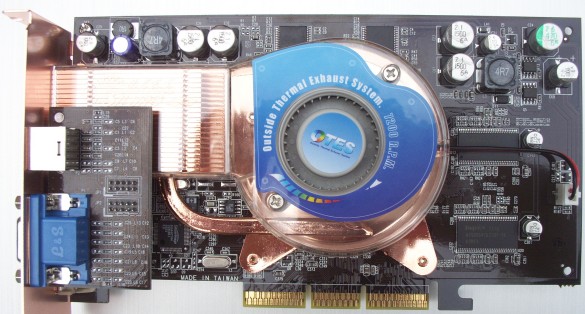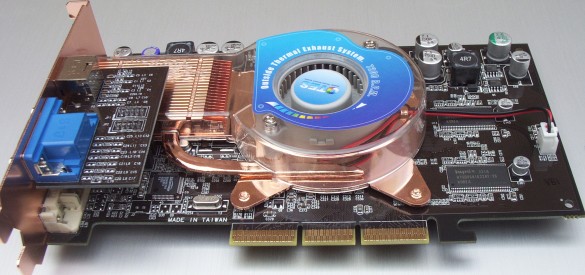Card I


ABIT have certainly ripped up the reference design ethos with this model. Based on the ever-so-popular GeForce4 Ti 4200 card, you can visually see just what a different approach is taken to the cooling of the GPU. The focus here is on getting the heat from the GPU away from the board as quickly as possible.

The main hub of activity centres around the upgraded cooler itself. You'll have noticed the large amount of copper used on the Ti 4200 OTES. Copper, as I have mentioned before, has amongst the best heat transfer properties of any current material. The thick copper base is attached to the GPU by means of an ad-hoc system that rivets on to the back of the card. Heat is transferred from the GPU to the copper heatsink base and then is expelled away from the GPU at high-speed via the 7200rpm fan shown above. The whole assembly is vacuum-sealed; the idea is to force the hot air generated by the copper transfer to the rear of the card as quickly as possible.
You'll also notice the presence of a heatpipe at the bottom of the above picture. A heatpipe works in a phase-change manner. The liquid-filled pipe is soldered on to the copper base. As the base gets warm, the heat is absorbed by the liquid in the pipe. Efficient absorption leads to the liquid heating up and turning into vapour.
The resulting heat is released further down the pipe (as the vapour travels down) where it meets the fins and is channeled out of the back. The loss of heat causes the vapour to reform as a liquid, travel back down to the start of the pipe, and start the process over again. It's like a min-VapoChill in that respect. The critical aspect, however, is to ensure that liquid evaporation doesn't take place too soon or too late in the cycle.









